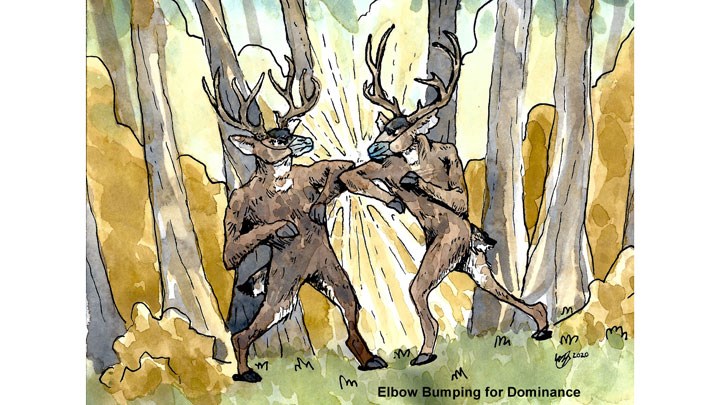
by Jim Heffelfinger - Wednesday, April 29, 2020

Amid the COVID-19 health crisis, our concerns are focused on our own health and that of our family and friends. We will persevere, but in the meantime, we hope and pray our efforts to manage it will help to minimize its impact on our population.
Without question we now have a firsthand understanding of what it feels like to be in the middle of an insidious disease pandemic. With a disease of such incredible infectiousness, we see exponential growth curves representing numerous infections and mortalities, and we start to think very seriously about the factors that spread disease. We are currently implementing aggressive actions to contain the disease and slow the rate of spread.
Mathematical models to predict the spread of infectious disease date back centuries. We are now hearing a lot about model projections for COVID-19 that are informing protocols to reduce its spread, including practicing social distancing, testing suspected cases and isolating positive individuals. All this sounds familiar to wildlife biologists and others who have been working to stop the spread of chronic wasting disease (CWD) in deer. Modelers, including wildlife disease professionals and deer population managers, have been projecting the effects of CWD on deer populations for years by estimating the rate of spread, mortality rate and impact to deer populations while recommending protocols to reduce the spread of CWD.
We know what must be done to limit the prevalence and spread of CWD from years of practical experience in dealing with infectious diseases. Recommendations to fight CWD are now hauntingly familiar to everyone.
Detecting and managing the spread of COVID-19 and CWD is not a part-time job. It requires vigilance in addressing breaches in any protocols that could allow a new hotspot to emerge.
With both diseases we know what needs to be done and yet it is hard to convince people to follow the suggestions, recommendations and directives. The question is always: “Are people committed enough to do what is needed to contain this disease?” Today hunters—and most of the world—now have a much deeper appreciation for this than we did a year ago. If we care about the future of our deer herds and proud heritage of the sustainable use of wildlife, we have to do the right thing even if that means deer herds aren’t managed at densities and age structures we would like to see.
When the immediate threat to human life subsides and we return to some semblance of pre-COVID-19 life, we will still have CWD to manage. One hopes we do that with a much more informed and resolute understanding of what needs to be done and that we have the resolve to remain serious about it.
About the Author
Jim Heffelfinger is an accomplished wildlife biologist with wildlife degrees from the University of Wisconsin-Stevens Point and Texas A&M University-Kingsville. He has worked for state and federal wildlife agencies, universities and the private sector. The opinions expressed here are his own and represent his personal and professional point of view and experience.
Heffelfinger is the author of “Deer of the Southwest” and is the author or coauthor of more than 200 magazine articles, 50 scientific papers, 20 book chapters and numerous outdoor TV scripts. He is a Boone & Crockett professional member and chairman of the Western Association of Fish and Wildlife Agencies’ Mule Deer Working Group representing 24 Western states and Canadian provinces. He is the recipient of the Wallmo Award, presented to the leading mule deer biologist in North America, and was named the 2009 Professional of the Year by the Mule Deer Foundation. He is also a member of the International Defensive Pistol Association and the U.S. Practical Shooting Association and competes weekly with his 1911.
E-mail your comments/questions about this site to:
[email protected]
Proudly supported by The NRA Foundation and Friends of NRA fundraising.
